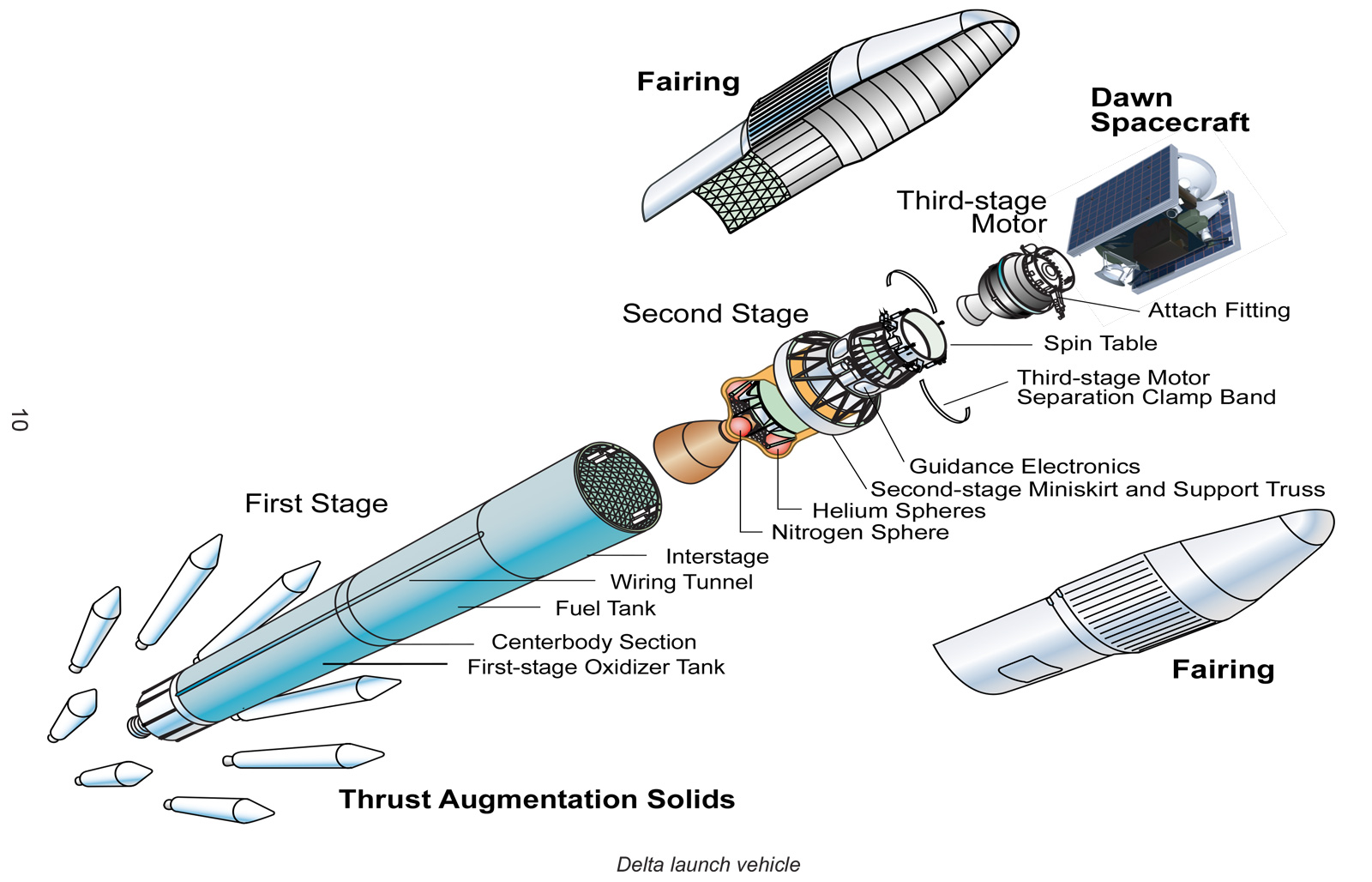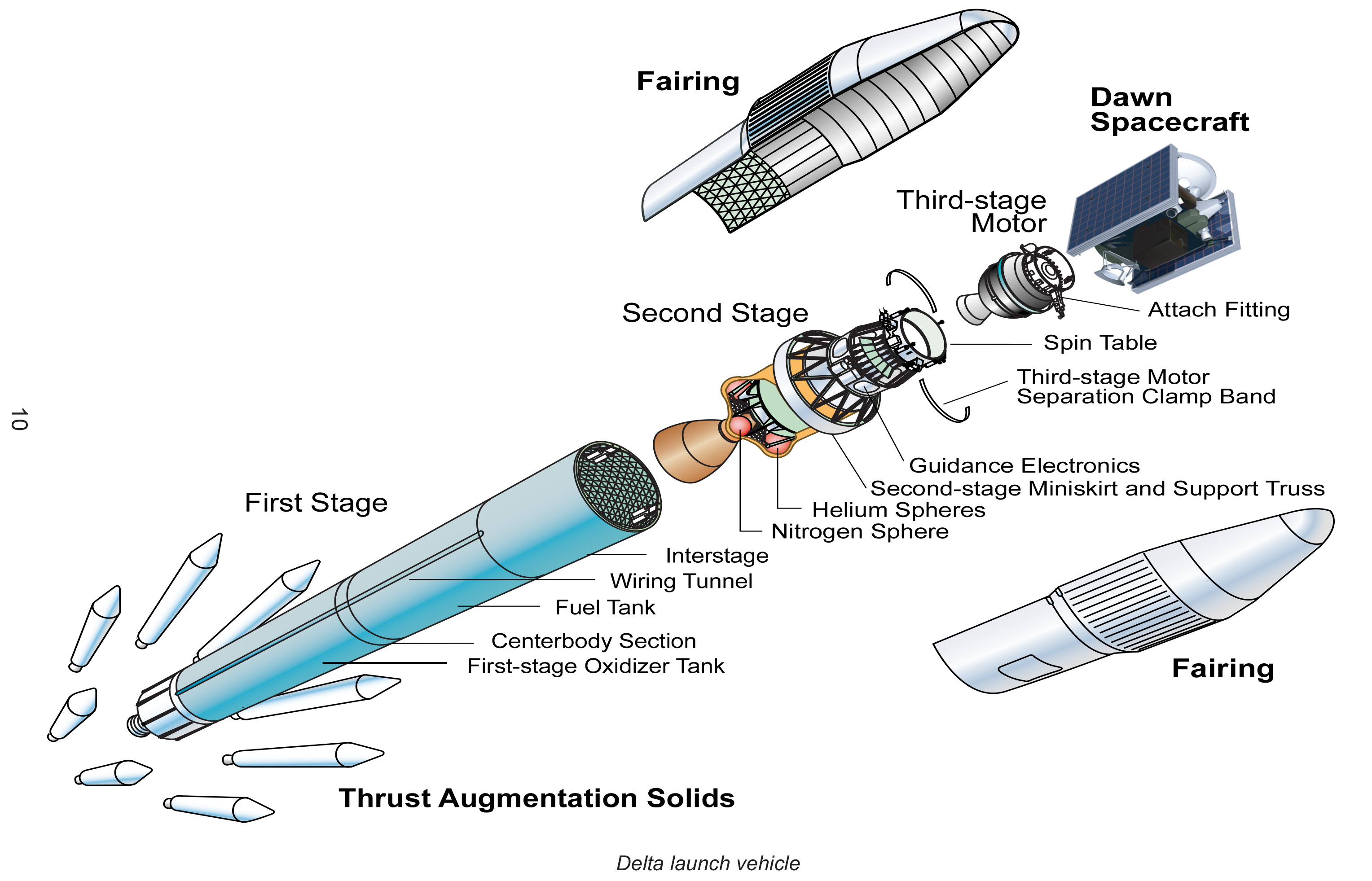Dawn Launch Vehicle Diagram

| Credit | NASA/JPL-Caltech |
|---|---|
| Language |
|
Dawn's launch vehicle is a variant of the Delta II known as a Delta 2925H. This version of the Delta II uses a first-stage liquid-fuel rocket with nine solid-fuel boosters, and a second-stage rocket with a restartable liquid-fuel engine. It is topped by a Star 48 solid-fuel upper-stage booster.
At the moment of liftoff, the Delta II’s first-stage main engine ignites, along with six of its nine solid-fuel boosters. The remaining three boosters are ignited in flight following the burnout of the first six. The spent booster casings are jettisoned in sets of three. The first-stage main engine continues to burn for 4 minutes, 23 seconds, when it shuts down.
Eight seconds later, the Delta’s first stage falls away, and approximately 5 seconds later the second stage is ignited. The Delta’s payload fairing, or nose cone, is jettisoned approximately 4 minutes, 41 seconds into flight. At launch plus 8 minutes, 58 seconds, the Delta’s second stage shuts down and the rocket coasts for 42 minutes, 37 seconds before the engine restarts. At launch plus 54 minutes, 14 seconds, the second stage engine shuts down. At this point, the Dawn spacecraft and the Delta’s second and third stages are in an orbit 184 kilometers (115 miles) above Earth.
After the second stage completes its burn, the Dawn spacecraft and its Star 48 upper stage are spun up to about 50 rpm, after which the second stage separates. Thirty-seven seconds later -- at launch plus 55 minutes, 45 seconds -- the Star 48 upper stage is ignited and burns for about 86 seconds. About 4.7 minutes after the third stage burns out, a yo-yo despin system is used to decrease the spin rate of the stacked Dawn spacecraft and Delta third stage from about 50 rpm to zero, then ending up about 3 rpm in the opposite direction. A few seconds later, pyrotechnic actuators and push-off springs will separate the Dawn spacecraft from the Delta’s third stage. The Dawn spacecraft will sense this separation when wires intentionally break.

